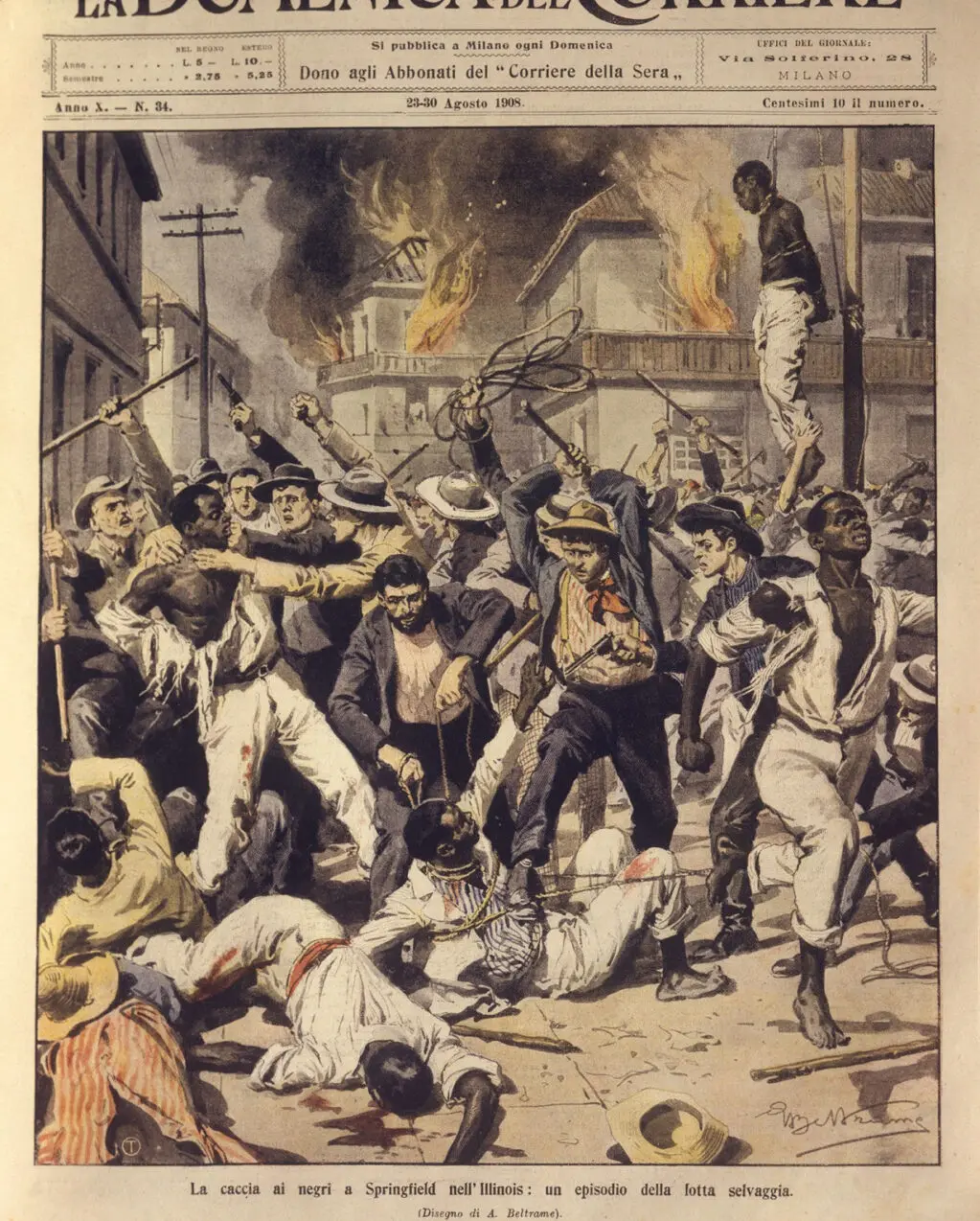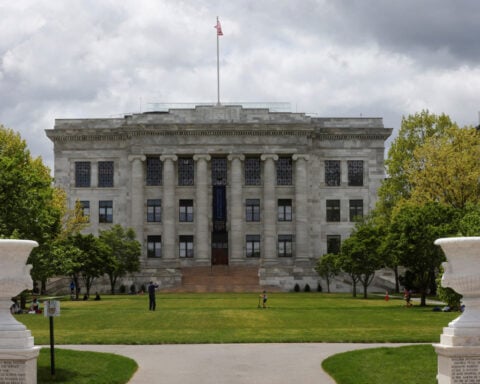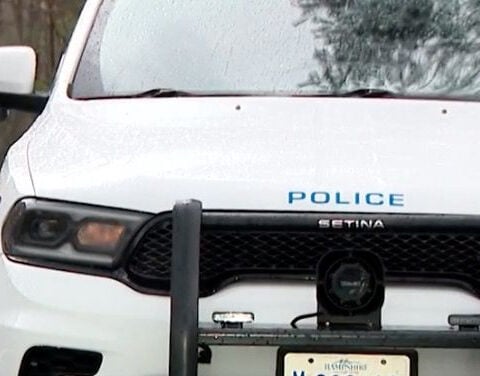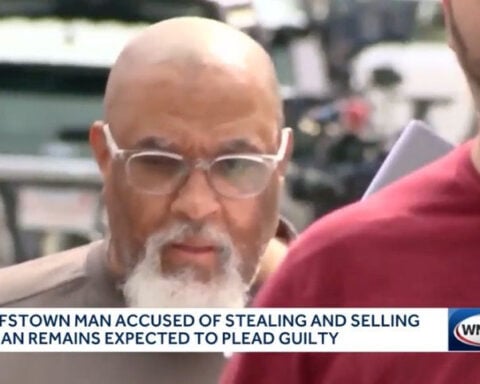(CNN) — On July 6, at St. John’s Hospital in Springfield, Illinois, Sonya Massey, a 36-year-old Black woman, died after being shot in her home by a White sheriff’s deputy.
Nearly 116 years earlier, an 84-year-old Black man died in the same hospital after being lynched by a White mob.
Both tragedies sparked calls for racial justice and now, as the nation’s attention once again turns to Springfield, local activists and historians say they hope Massey’s death will bring about change, just like the murder of the city’s Black residents did more than a century ago.
1908 Springfield Race Riots
Local newspapers captured the chaos that began in Springfield on August 14, 1908, when a mob gathered outside the county jail.
Incensed by reports that a White woman had been raped by a Black man, the mob demanded the sheriff turn over the men accused of the crime.
Earlier that day, The Illinois State Register urged “no effort should be spared to find the black viper and to force appropriate punishment,” and later that night, large parts of the state’s capital had been reduced to smoldering rubble.
“The White community just erupted,” said Kathryn Harris, a retired director of the Abraham Lincoln Presidential Library and Museum who helped organize the centennial commemoration of the riots.
“It started because a White woman cried rape by a Black man. Truth be told, when all the story came out, she had lied, but the riot had already taken place.”
And the mob had left death and destruction in their wake.
“Threats of lynching were heard on every hand,” the State Register reported. When the crowd learned the sheriff had already transported the two men accused of the assault out of the city, they enacted vengeance on its residents.
“Fully 10,000 people gathered in the streets and watched the rioters in their work of destruction,” according to the Illinois State Journal.
One of the rallying cries, Harris said, was, “‘Mr. Lincoln brought you here, and we’re going to run you out.’”
As the White mob rampaged throughout the city, Black residents grabbed what belongings they could and fled on trains. The state’s National Guard was called in to help restore order and Harris said those who couldn’t escape took shelter in the city’s armory.
But despite the presence of the National Guard, the riots continued for days, leaving multiple people dead and dozens injured. In the early hours of Saturday morning, the mob descended on a barbershop owned by a Black man named Scott Burton and lynched him.
“The lynching was illuminated by the flames of the burning building directly opposite,” the Register reported. “Every building in that vicinity with the exception of … one or two others, was burned and the lynching was in the midst of this scene of complete havoc.”
Later that night, the mob set its sights on William Donnegan, a shoemaker in his 80s who was once a conductor on the Underground Railroad, according to Illinois’ Historic Preservation Division.
Donnegan’s wife was White and “this fact … seemed to carry the members of the mob to a higher pitch of anger,” The Journal of Springfield reported.
The mob unsuccessfully attempted to lynch Donnegan and left him for dead. Police later cut Donnegan down and transported him to the St. John’s hospital, where he died from his injuries.
“Interestingly enough, it was the same hospital where Ms. Massey died,” Harris said. “So, it makes for a very sad, cyclical story.”
Weeks after the riot, Hallam signed a sworn statement that one of the men accused of the assault, “was not her assailant and (requested) his immediate release from Bloomington jail,” the Illinois State Register reported.
A new movement begins
William English Walling, a prominent White labor organizer, traveled from Chicago to Springfield to report on the riot. He described what he witnessed in an article titled “The Race War in the North.”
“We have closed our eyes to the whole awful and menacing truth – that a large part of the white population of Lincoln’s home, supported largely by farmers and miners of the neighboring towns, have initiated a permanent warfare with the negro race,” he wrote.
“Either the spirit of the abolitionists of Lincoln … must be revived and we must come to treat the negro on a plane of absolute political and social equality or … (we) will have soon transferred the race war to the North.”
Months later, in response to the Springfield riot, a group of Black and White activists met at Walling’s apartment in New York City to discuss creating an organization that would advocate for the civil and political rights of African Americans across the country.
On Feb. 12, 1909, in honor of Abraham Lincoln’s 100th birthday, the group released a nationwide “call” to address racial justice in the country. The letter was signed by a diverse group of nearly 60 people, including prominent Black leaders like Ida B. Wells and W.E.B. Du Bois.
The Springfield race riot “was the final tipping point” that led to the founding of the NAACP.
“After the 1908 race riots, people said enough is enough, not in our hometown,” said Teresa Haley, a lifelong Springfield resident and the former president of the Springfield chapter of the NAACP.
Haley, who now leads Visions 1908, an organization dedicated to preserving the legacy and artifacts of the race riots, said the group has advocated for a national monument to be created in Springfield, to honor the events.
As a student of history, Harris said when she learned of Massey’s killing, her thoughts quickly turned to the riots in 1908.
It’s ironic, she said, that Springfield – which was the hometown of “The Great Emancipator” Abraham Lincoln – should once again find itself at the center of national conversations around racial justice in America.
“We still have lots of work to do to improve race relations,” Harris said. “But we won’t give up.”
Now, more than a century after the riots, as the nation learns new details about what happened to Sonya Massey in her home, Haley said she hopes the tragedy will renew efforts to pass the George Floyd Justice in Policing Act and spark change, just like events in her city did over a century ago.
“We want whole justice, but a lot of times we realize it’s just us out here fighting,” she said.
The-CNN-Wire
™ & © 2024 Cable News Network, Inc., a Warner Bros. Discovery Company. All rights reserved.

 Trump has begun another trade war. Here's a timeline of how we got here
Trump has begun another trade war. Here's a timeline of how we got here
 Canada's leader laments lost friendship with US in town that sheltered stranded Americans after 9/11
Canada's leader laments lost friendship with US in town that sheltered stranded Americans after 9/11
 Chinese EV giant BYD's fourth-quarter profit leaps 73%
Chinese EV giant BYD's fourth-quarter profit leaps 73%
 You're an American in another land? Prepare to talk about the why and how of Trump 2.0
You're an American in another land? Prepare to talk about the why and how of Trump 2.0
 Chalk talk: Star power, top teams and No. 5 seeds headline the women's March Madness Sweet 16
Chalk talk: Star power, top teams and No. 5 seeds headline the women's March Madness Sweet 16
 Purdue returns to Sweet 16 with 76-62 win over McNeese in March Madness
Purdue returns to Sweet 16 with 76-62 win over McNeese in March Madness








